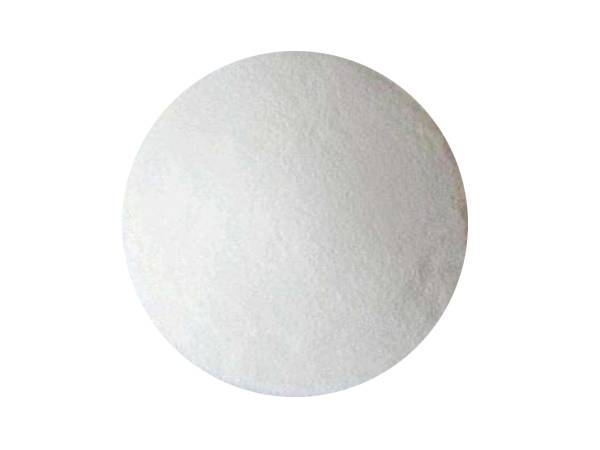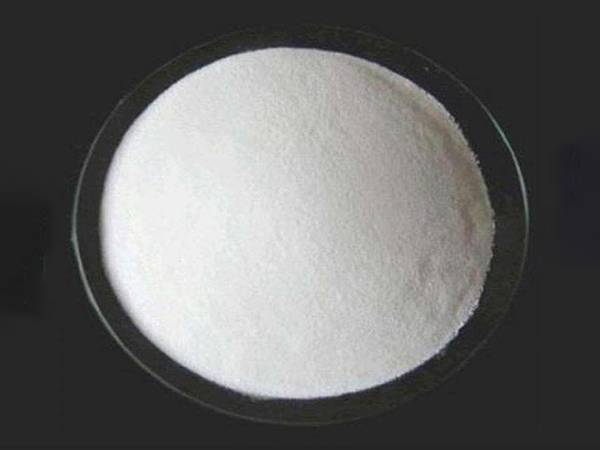



Potassium Persulphate 7727-21-1: Pure Grade Oxidizer
In the vast landscape of industrial chemicals, certain compounds stand out for their versatile applications and critical roles across diverse sectors. One such vital chemical is Potassium Persulphate, a powerful oxidizing agent with a unique set of properties that make it indispensable in modern manufacturing and processing. Also known by its CAS number `7727 21 1` or simply as potassium peroxydisulfate, this compound is globally recognized for its efficacy and reliability. At Fizachem, we specialize in providing high-quality Potassium Persulphate (`https://www.fizachem.com/potassium-persulphate.html`) that meets stringent industry standards, ensuring superior performance for our clients. This comprehensive guide delves into the intricacies of this crucial chemical, from its market trends and technical specifications to its manufacturing process and myriad applications. Understanding the full scope of Potassium Persulphate is key to unlocking its potential in your operations.
Industry Trends and Market Dynamics of Potassium Persulphate
The global market for Potassium Persulphate is experiencing steady growth, driven by expanding end-use industries such as plastics, textiles, electronics, and water treatment. As a powerful initiator for emulsion polymerization, its demand is directly correlated with the growth of synthetic rubber, acrylic fibers, and various plastics. Environmental regulations are also playing a significant role; the increasing need for effective wastewater treatment solutions, particularly for removing recalcitrant organic pollutants, positions Potassium Persulphate as a preferred oxidizing agent due to its efficiency and relatively benign by-products.
Emerging trends highlight a shift towards higher purity grades and more sustainable production methods. Innovations in synthesis pathways aim to reduce energy consumption and waste generation, aligning with global sustainability goals. Furthermore, the burgeoning demand from the electronics industry for PCB etching and desmearing processes, combined with its established use in hair bleaching products, underpins a robust and diverse market. The market forecasts suggest continued expansion, with a compound annual growth rate (CAGR) estimated at around 4-5% over the next five to seven years, indicating a healthy and evolving landscape for Potassium Persulphate suppliers. Companies that can consistently deliver high-purity, cost-effective, and environmentally responsible `potasium persulphate` products are poised for significant success.
Technical Parameters and Product Specifications
Understanding the precise technical parameters of Potassium Persulphate is crucial for its effective and safe application. As a white crystalline solid, it boasts high solubility in water and decomposes upon heating, releasing oxygen. Its strong oxidizing power, derived from the peroxy group, makes it highly reactive and versatile.
Key Specifications of Potassium Persulphate
| Property | Parameter | Typical Value | Standard |
|---|---|---|---|
| Chemical Formula | K2S2O8 | N/A | N/A |
| CAS Number | `7727 21 1` | N/A | N/A |
| Molecular Weight | 270.32 g/mol | N/A | N/A |
| Appearance | White Crystalline Solid | N/A | Visual Inspection |
| Assay (K2S2O8) | Purity % | ≥ 99.0% | ISO 9001:2015, GB/T 19001-2016 |
| Active Oxygen Content | % | ≥ 5.90% | Titration Method |
| Chloride (Cl) | ppm | ≤ 50 ppm | Spectrophotometry |
| Iron (Fe) | ppm | ≤ 10 ppm | Atomic Absorption Spectroscopy |
| Manganese (Mn) | ppm | ≤ 5 ppm | Atomic Absorption Spectroscopy |
| Heavy Metals (as Pb) | ppm | ≤ 10 ppm | ICP-OES |
| Moisture | % | ≤ 0.15% | Karl Fischer Titration |
| Solubility in Water (20°C) | g/100mL | ~5.2 g/100mL | N/A |
| Bulk Density | g/cm3 | ~1.1 - 1.3 | ASTM D1895 |
| pH (1% solution) | 2.0 - 4.0 | pH Meter | |
| Melting Point | °C | Decomposes at ~100°C | N/A |
These specifications underscore the high purity and controlled composition of our Potassium Persulphate, ensuring consistent performance in various industrial processes. The low levels of impurities like chloride, iron, and heavy metals are particularly critical for applications in electronics and sensitive chemical syntheses, where even trace contaminants can significantly impact product quality or catalytic activity. Fizachem's `potassium persulfate sds` is readily available, detailing comprehensive safety information, handling procedures, and emergency measures to ensure safe usage and compliance with international regulations.

Comprehensive Manufacturing Process of Potassium Persulphate
The production of Potassium Persulphate is a sophisticated chemical engineering process primarily conducted through the electrolysis of a concentrated solution of potassium bisulphate (KHSO4) or a mixture of potassium sulphate (K2SO4) and sulphuric acid (H2SO4). This method, often referred to as the anodic oxidation process, ensures high purity and efficient yield. Below is a detailed breakdown of the key stages involved:
Manufacturing Process Flow Description (Simulated Diagram)
Imagine a highly controlled chemical plant where raw materials flow through a series of reactors and purification units, culminating in the pure, crystalline Potassium Persulphate. The process is designed for continuous production, optimizing energy efficiency and product consistency.
2SO42- → S2O82- + 2e-
Simultaneously, hydrogen gas (H2) is produced at the cathode. The design of these electrolytic cells is critical; they are typically large-scale, robust units, often employing water cooling jackets to maintain optimal operating temperatures and prevent thermal decomposition of the product. The materials used in cell construction (e.g., specialized plastics, ceramics, and corrosion-resistant alloys) are selected for their durability and inertness to the highly corrosive electrolytes.
Throughout this entire manufacturing process, stringent quality control measures are implemented at every stage. This includes continuous monitoring of solution concentrations, current densities, temperatures, and pH levels. Final product inspection involves rigorous testing against international standards such as ISO and ANSI, ensuring that each batch of Potassium Persulphate meets the specified purity, consistency, and performance criteria. The typical service life of such industrially produced Potassium Persulphate is long, provided it is stored correctly in cool, dry conditions away from reducing agents and combustible materials, usually maintaining its efficacy for several years.
Application Scenarios and Technical Advantages
The versatility of Potassium Persulphate allows it to be utilized across a wide array of industries, each benefiting from its powerful oxidizing capabilities. Its high efficiency and controlled reactivity make it a preferred choice over many traditional oxidizers.
Key Applicable Industries and Advantages:
- Polymerization Initiator: In the chemical industry, particularly for polymer manufacturing, Potassium Persulphate is widely used as a radical initiator for emulsion polymerization of vinyl acetate, acrylics, and styrene-butadiene rubber (SBR). Its advantages here include high initiation efficiency, minimal chain transfer, and the ability to produce high molecular weight polymers with controlled properties.
- Textile Industry: It serves as a desizing agent and a bleaching agent for various fabrics. Its strong oxidizing nature helps remove starches and other sizing agents efficiently, preparing the fabric for dyeing. Compared to conventional bleaching agents, it offers excellent color stability and reduced fiber damage.
- Petrochemical & Oil & Gas: In oil and gas exploration, `potasium persulphate` is employed as a breaker in fracturing fluids to degrade polymers and reduce viscosity, facilitating better oil and gas flow. Its high thermal stability and ability to operate effectively under diverse reservoir conditions are significant advantages.
- Water Treatment: A critical application is in advanced oxidation processes (AOPs) for wastewater treatment, where it effectively degrades recalcitrant organic pollutants, including phenols, pesticides, and pharmaceuticals. It's particularly effective when activated by heat, UV light, or transition metals. Its advantage lies in achieving higher removal efficiencies for complex contaminants that are resistant to conventional biological or physical treatment methods, contributing to cleaner effluent and environmental protection.
- Electronics Industry: For printed circuit board (PCB) manufacturing, Potassium Persulphate is used as an etchant for copper, offering precise and controlled etching with good uniformity. It's also utilized in desmearing processes to prepare drilled holes for plating. Its clean etching properties minimize residues and enhance circuit board reliability.
- Cosmetics & Personal Care: Commonly found in hair bleaching formulations as an oxidizing component. It effectively lightens hair color by breaking down melanin pigments. Its controlled release of oxygen ensures effective bleaching while minimizing damage to hair structure when used correctly.
- Metal Surface Treatment: Used in the cleaning and etching of various metal surfaces, including copper and brass, to prepare them for plating or coating, ensuring better adhesion and finish.
- Photography: In photographic processes, it acts as a bleaching agent in film processing, particularly in color reversal processes.
The corrosion resistance and energy-saving benefits of using Potassium Persulphate are evident in these applications. For instance, in water treatment, its efficacy means less chemical usage to achieve desired results, leading to cost savings and reduced environmental impact. In polymerization, its controlled initiation ensures minimal wasted monomer and maximum product yield. Fizachem ensures its Potassium Persulphate conforms to relevant industry inspection standards, including ISO and ANSI, guaranteeing its suitability for these demanding applications.

Choosing the Right Manufacturer: Vendor Comparison and Custom Solutions
Selecting a reliable supplier for Potassium Persulphate is paramount to ensuring consistent quality and supply chain stability. Not all manufacturers offer the same level of product purity, service, or commitment to safety and sustainability. When evaluating potential vendors, consider the following critical factors:
Factors for Manufacturer Comparison:
- Purity and Consistency: A reputable manufacturer, like Fizachem, will consistently deliver Potassium Persulphate with assay levels of 99.0% or higher and extremely low impurity profiles (e.g.,
- Manufacturing Standards and Certifications: Look for manufacturers adhering to international quality management systems such as ISO 9001:2015. Compliance with industry-specific standards and environmental certifications (e.g., ISO 14001) indicates a commitment to both product quality and responsible manufacturing. Fizachem's facilities are ISO certified, demonstrating our dedication to global best practices.
- Technical Support and Expertise: A strong technical support team can provide invaluable assistance with product selection, application optimization, and troubleshooting. Companies with a deep understanding of the chemistry and applications of `7727 21 1` can offer tailored solutions.
- Supply Chain Reliability: Evaluate a vendor's logistics capabilities, inventory management, and ability to deliver on time, especially for high-volume orders. A robust global distribution network minimizes lead times and ensures continuity of supply.
- Safety Data Sheets (SDS) & Compliance: Ensure the manufacturer provides comprehensive `potassium persulfate sds` documents and is compliant with all relevant local and international chemical safety regulations. This reflects a commitment to responsible product stewardship.
- Customization Capabilities: For specialized applications, the ability to provide customized grades, particle sizes, or packaging solutions can be a significant advantage.
- Pricing and Value: While cost is a factor, prioritize value over mere price. A slightly higher-priced product with superior purity, consistent supply, and excellent technical support often results in lower overall operational costs and better end-product quality.
Custom Solutions and Partnership Approach:
At Fizachem, we understand that standard solutions don't always fit every unique industrial requirement. We pride ourselves on our ability to offer tailored `potasium persulphate` solutions, collaborating closely with clients to meet specific needs. This might involve:
- Specific Particle Sizes: For applications requiring faster dissolution rates or specific handling characteristics, we can provide customized particle size distributions.
- Enhanced Purity Grades: For highly sensitive applications, such as semiconductor manufacturing or pharmaceutical synthesis, we can offer ultra-high purity grades with even tighter impurity specifications.
- Custom Packaging: From bulk bags to specialized container111s designed for automated dosing systems, we can adapt our packaging to integrate seamlessly with your operational setup.
- Formulation Consulting: Our experienced chemists can provide guidance on incorporating Potassium Persulphate into your existing formulations, optimizing reaction conditions, and addressing compatibility concerns.
Our service philosophy revolves around building long-term partnerships. With over two decades of service in the chemical industry and a track record of collaboration with leading enterprises, Fizachem has garnered a reputation for reliability, innovation, and client-centric service. This commitment to collaborative problem-solving and delivering precise, high-quality chemicals makes us a trusted partner for your Potassium Persulphate needs.
Real-World Application Cases and Client Success Stories
The tangible impact of high-quality Potassium Persulphate is best demonstrated through its successful application in various industries. Here are a few anonymized examples that highlight the practical benefits our clients have experienced:
Case Study 1: Polymer Production Efficiency
A major synthetic rubber manufacturer was struggling with inconsistent polymerization rates and occasional batch contamination due to fluctuating initiator quality. Upon switching to Fizachem's Potassium Persulphate, they observed a remarkable improvement. The consistent high purity and low impurity profile of our product led to:
- Reduced Polymerization Time: A 15% reduction in overall reaction time, directly translating to increased production capacity.
- Improved Polymer Consistency: Greater uniformity in molecular weight and polydispersity, leading to superior end-product performance.
- Minimized Residues: Lower levels of unreacted monomer and initiator residues, enhancing product purity and reducing downstream purification costs.
Case Study 2: Advanced Wastewater Treatment
An industrial facility grappling with persistent organic pollutants (POPs) in its effluent, facing increasingly stringent discharge limits, sought a more effective treatment solution. They implemented an Advanced Oxidation Process (AOP) using Fizachem's Potassium Persulphate as the primary oxidant. Key outcomes included:
- High Contaminant Removal: Achieved over 95% removal of targeted recalcitrant compounds, significantly surpassing previous treatment methods.
- Reduced Chemical Consumption: Optimization of the oxidation process with our consistent product quality led to a 10% reduction in chemical dosage compared to initial trials with lower-grade alternatives.
- Compliance Assurance: Consistently met and exceeded regulatory discharge standards, avoiding hefty fines and improving their environmental footprint.
These cases exemplify our commitment to delivering not just a chemical, but a solution that drives efficiency, improves quality, and ensures compliance. Our product's reliability, backed by adherence to standards like ISO 9001:2015, makes it a cornerstone for critical industrial processes.
Frequently Asked Questions (FAQ) about Potassium Persulphate
Conclusion and Future Outlook
Potassium Persulphate remains a cornerstone chemical in various industrial processes, underpinning advancements in areas from polymer science to environmental remediation. Its consistent performance, adaptability, and the ongoing innovations in its application ensure its continued relevance and growth in the global market. As industries evolve towards more efficient and sustainable practices, the demand for high-purity, reliable oxidizing agents like `potasium persulphate` is only set to increase. Fizachem is committed to meeting this demand by providing superior quality Potassium Persulphate (https://www.fizachem.com/potassium-persulphate.html), backed by our deep industry expertise, stringent quality control, and customer-centric approach.
The future of Potassium Persulphate is bright, with research continuously exploring new activation methods and applications, particularly in emerging fields like advanced materials and sustainable chemistry. Embracing chemicals from trusted suppliers that adhere to standards like `7727 21 1` and provide comprehensive `potassium persulfate sds` is not just a choice for quality, but a commitment to operational excellence and environmental responsibility.
References and Further Reading:
- "The Use of Peroxydisulfate for Advanced Oxidation Processes: A Review" - Journal of Environmental Chemical Engineering. Available at: https://www.sciencedirect.com/science/article/pii/S221499371730078X
- "Potassium Persulphate Market: Global Industry Trends, Share, Size, Growth, Opportunity and Forecast 2023-2028" - IMARC Group. (Access to full report may require subscription)
- "Recent Advances in Persulfate-Based Advanced Oxidation Processes for Water and Wastewater Treatment" - Environmental Science & Technology. Available at: https://pubs.acs.org/doi/10.1021/es5034604
- "Potassium Persulfate: Properties, Applications, and Safety" - Chemical Industry Digest (Article from industry forum/publication example, specific link may vary).
-
Why Sodium Persulfate Is Everywhere NowNewsJul.07,2025
-
Why Polyacrylamide Is in High DemandNewsJul.07,2025
-
Understanding Paint Chemicals and Their ApplicationsNewsJul.07,2025
-
Smart Use Of Mining ChemicalsNewsJul.07,2025
-
Practical Uses of Potassium MonopersulfateNewsJul.07,2025
-
Agrochemicals In Real FarmingNewsJul.07,2025
-
Sodium Chlorite Hot UsesNewsJul.01,2025










